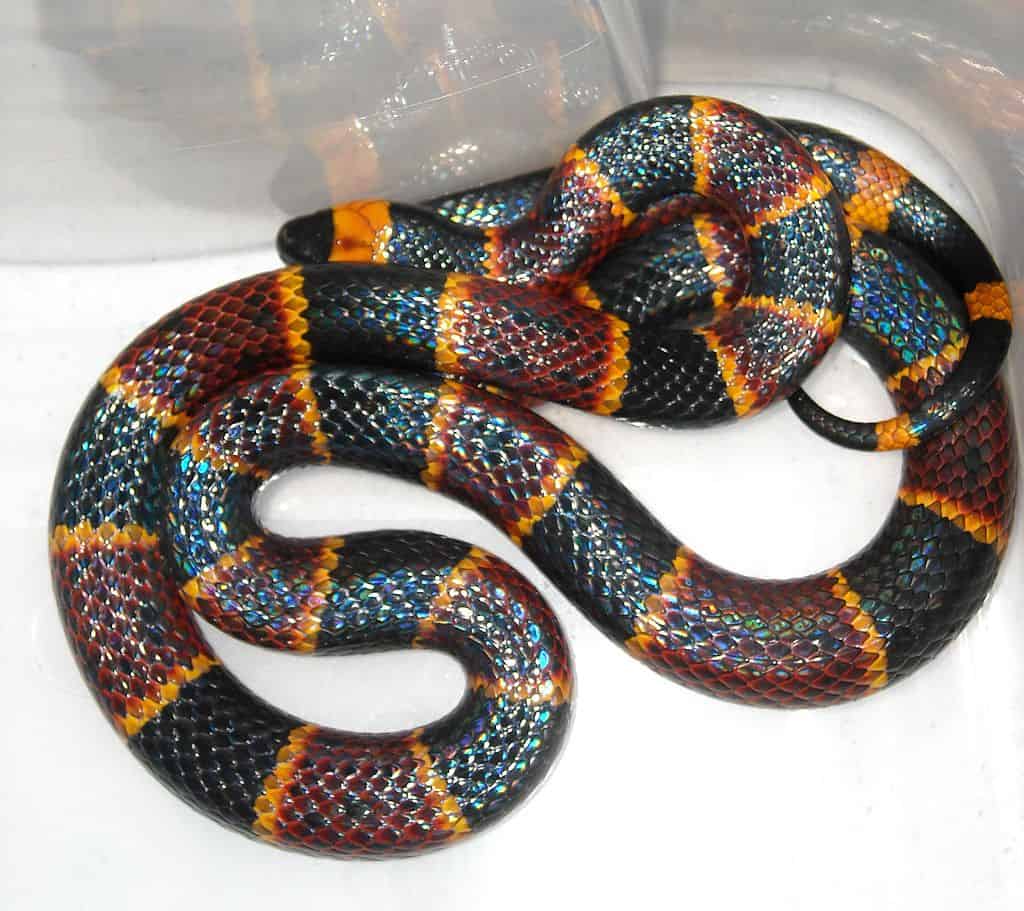When we think of dangerous reptiles, our minds often conjure images of massive crocodiles or giant pythons. However, some of the most dangerous reptiles on the planet are surprisingly small. These pint-sized predators pack a powerful punch, with venoms and defense mechanisms that can cause serious harm or even death to humans. This article explores 13 tiny reptiles that, despite their diminutive size, command serious respect due to their dangerous capabilities. From venomous lizards to deadly snakes measuring just a few inches, these small reptiles prove that in nature, size isn’t always indicative of threat level.
Inland Taipan (Oxyuranus microlepidotus)

The Inland Taipan may not be the smallest snake on our list, but at just 5-6 feet long and slender in build, it’s relatively small compared to most dangerous reptiles. What makes this Australian native truly remarkable is that it possesses the most toxic venom of any land snake in the world. A single bite can deliver enough venom to kill up to 100 adult humans. Its venom contains a potent neurotoxin that can cause death within 45 minutes if left untreated. Despite this lethal potential, the Inland Taipan is shy and reclusive, preferring to avoid human contact and inhabiting remote semi-arid regions of central east Australia. Its small size allows it to hide easily and strike with lightning speed when threatened.
Blue-Ringed Octopus (Hapalochlaena maculosa)

While technically not a reptile but a cephalopod, the Blue-Ringed Octopus deserves an honorable mention for being one of the most dangerous tiny creatures in the ocean. This small octopus, only about the size of a golf ball, displays brilliant blue rings when threatened. Its venom contains tetrodotoxin, a powerful neurotoxin with no known antidote. This tiny creature carries enough venom to kill 26 adult humans within minutes. Found in tide pools and coral reefs in the Pacific and Indian Oceans, particularly around Australia and Japan, these octopuses are a stark reminder that deadly venom often comes in small packages. Their inclusion here, though not a reptile, provides context for just how powerful small venomous animals can be.
Western Coral Snake (Micrurus tener)

The Western Coral Snake is a diminutive reptile, rarely exceeding 24 inches in length, yet it possesses a potent neurotoxic venom that can cause respiratory failure. This North American species is recognizable by its distinctive red, yellow, and black banding pattern, prompting the warning rhyme: “Red touch yellow, kill a fellow.” Despite its dangerous capabilities, the Western Coral Snake has a relatively small and specialized mouth with fixed fangs, making it less efficient at delivering venom than other venomous snakes. This, combined with its shy, reclusive nature, means human bites are rare. However, when they do occur, they require immediate medical attention, as the venom can be lethal if untreated. These snakes typically inhabit woodlands, scrubby areas, and rocky regions in the southern United States and northern Mexico.
Many-Banded Krait (Bungarus multicinctus)

The Many-Banded Krait, native to Southeast Asia, is a small nocturnal serpent rarely exceeding 4 feet in length. Don’t let its size fool you—this slender snake possesses one of the most potent venoms in the world, estimated to be 16 times more powerful than that of a cobra. Its venom contains powerful neurotoxins that can cause respiratory failure within hours. What makes this tiny reptile particularly dangerous is its habit of entering human dwellings at night and its relatively painless bite, which victims might sleep through, only to discover the deadly consequences upon waking—if they wake at all. With distinctive black and white bands encircling its body, the Many-Banded Krait is as beautiful as it is deadly. Despite their lethal potential, these snakes are typically non-aggressive unless provoked or cornered.
Death Adder (Acanthophis antarcticus)

The Death Adder is a master of camouflage and ambush, with most species measuring only 15-35 inches in length. Native to Australia, New Guinea, and nearby islands, these small vipers have a distinctive triangular head and stout body. What makes them particularly dangerous is their hunting strategy—unlike most snakes that actively pursue prey, Death Adders lie motionless, partially buried in leaf litter, using their worm-like tail tip as a lure. When prey (or an unfortunate human) comes within range, they strike with lightning speed, delivering a highly toxic venom that can cause paralysis and respiratory failure within six hours if untreated. Their small size, excellent camouflage, and the fact that they don’t flee when humans approach (unlike most snakes) make them especially dangerous. Antivenom exists, but the Death Adder’s bite has historically had a fatality rate as high as 50% before modern medical interventions became available.
Mexican Beaded Lizard (Heloderma horridum)
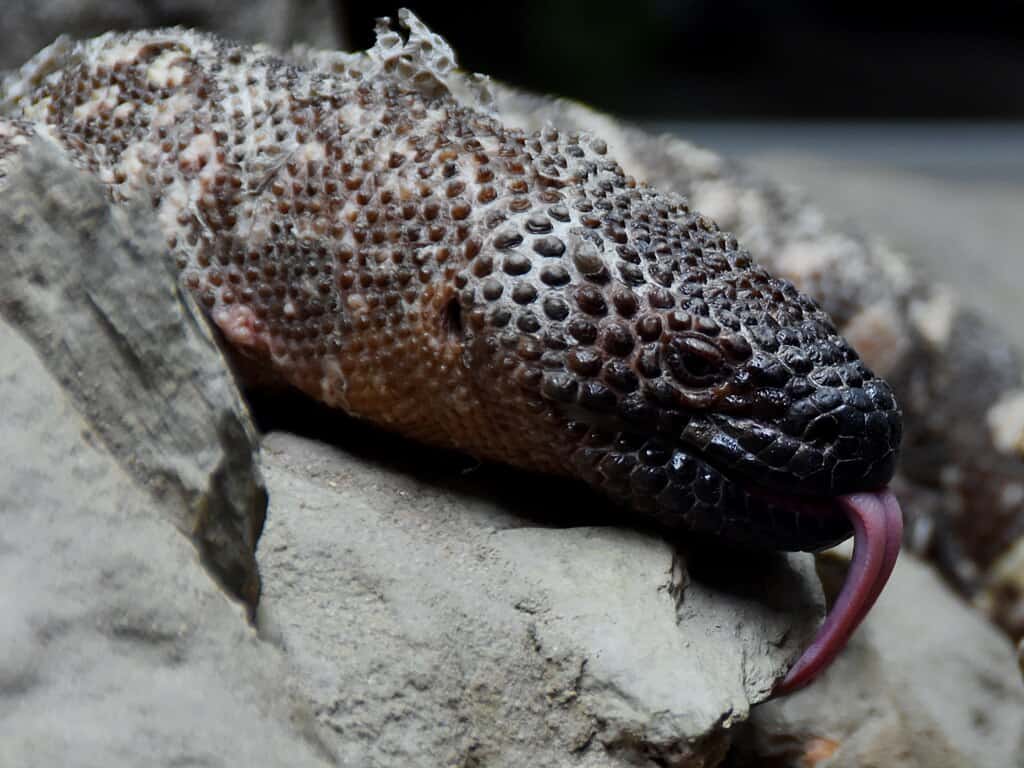
The Mexican Beaded Lizard is one of only two truly venomous lizards in the world. Growing to about 24-36 inches in length, it’s relatively small compared to many other dangerous reptiles. These stocky lizards possess venom glands in their lower jaws and deliver toxins through grooved teeth rather than hollow fangs. While rarely fatal to humans, their venom causes intense pain, swelling, and reduced blood pressure. What makes these lizards particularly dangerous is their tenacious bite—once they latch on, they are known to maintain their grip for several minutes, allowing venom to seep deeply into the wound. Native to Mexico and Guatemala, these lizards have distinctive beaded scales that give them a beautiful textured appearance. Their black bodies feature intricate patterns of yellow spots or bands. Despite their dangerous potential, Mexican Beaded Lizards are endangered due to habitat loss and illegal collection for the exotic pet trade.
Blue Malayan Coral Snake (Calliophis bivirgatus)

The Blue Malayan Coral Snake is a strikingly beautiful yet deadly serpent from Southeast Asia, typically measuring only 3-4 feet in length. Its slender body displays a stunning electric blue coloration with bright red head and tail, making it one of the most visually distinctive venomous snakes in the world. Despite its small size, this species possesses extremely potent venom with specialized toxins that target the nervous system. What makes this tiny reptile particularly dangerous is its unusually large venom glands, which extend about one-third the length of its body—a unique adaptation among snakes. While generally shy and rarely encountered by humans, its bite can cause rapid onset of muscle paralysis, respiratory failure, and potentially death within hours if not treated. The snake’s primary diet consists of other snakes, including venomous species, showcasing its formidable predatory capabilities despite its diminutive size.
Gila Monster (Heloderma suspectum)
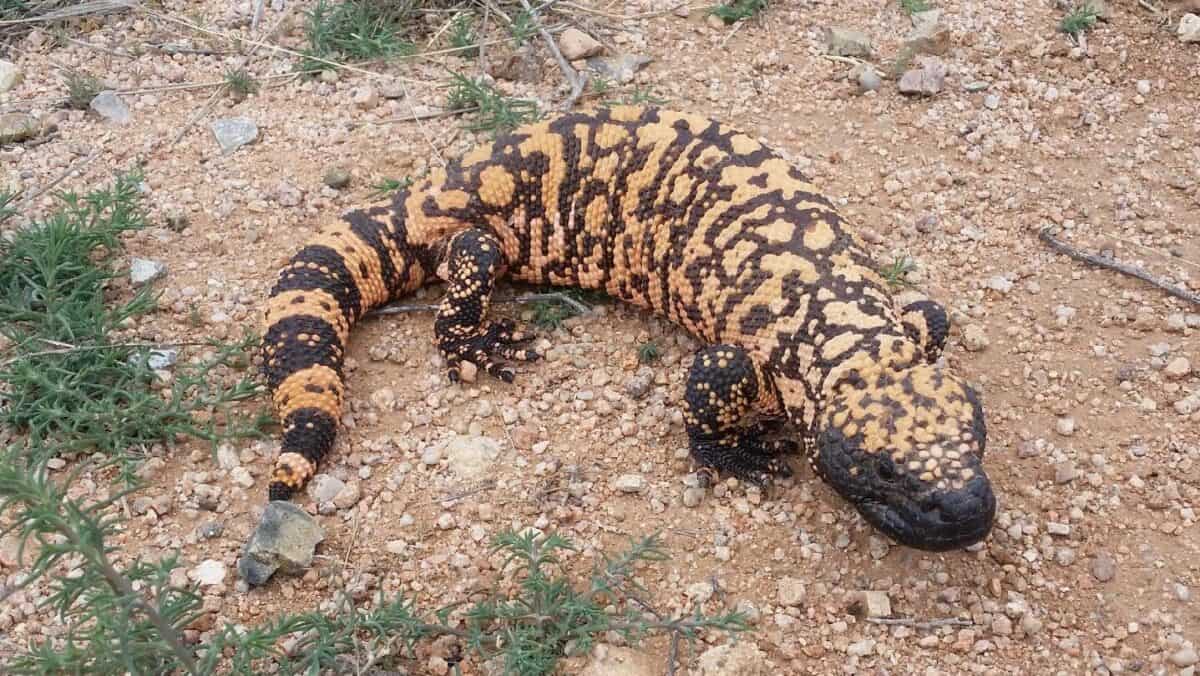
The Gila Monster is the second of the world’s only two venomous lizard species and is native to the southwestern United States and northwestern Mexico. Growing to just 20-24 inches in length, this colorful lizard has a stocky body covered with beaded scales in patterns of black with pink, orange, or yellow markings. Unlike most venomous reptiles that use their venom primarily for hunting, the Gila Monster employs its venom mainly for defense. When threatened, it delivers venom through grooved teeth in its lower jaw while maintaining a powerful, grinding bite that can last for several minutes. The venom contains compounds that cause excruciating pain, drop in blood pressure, and profuse sweating, though fatalities are extremely rare. What makes this small reptile particularly noteworthy is that its venom has provided valuable medical applications—a compound derived from Gila Monster venom (exendin-4) has been developed into a medication for type 2 diabetes, demonstrating that even dangerous reptiles can contribute positively to human health.
Saw-Scaled Viper (Echis carinatus)

The Saw-Scaled Viper is responsible for more human deaths than any other snake in the world, despite its modest size of usually less than 2 feet in length. Native to the Middle East, Central Asia, and the Indian subcontinent, these small vipers have adapted to a wide range of habitats, from deserts to rainforests. What makes them particularly dangerous is a combination of factors: highly potent hemotoxic venom that causes bleeding disorders and tissue damage, an aggressive temperament when threatened, and their prevalence in densely populated areas with limited access to antivenom. These tiny terrors have a distinctive threat display—they rub their serrated scales together to produce a sizzling sound as a warning before striking. Their small size means they’re easily overlooked until it’s too late, and their ability to launch the front third of their body during a strike gives them an attack range far greater than their size would suggest. In rural areas where they’re common, simply walking barefoot at night can be a life-threatening activity.
Vine Snake (Oxybelis fulgidus)
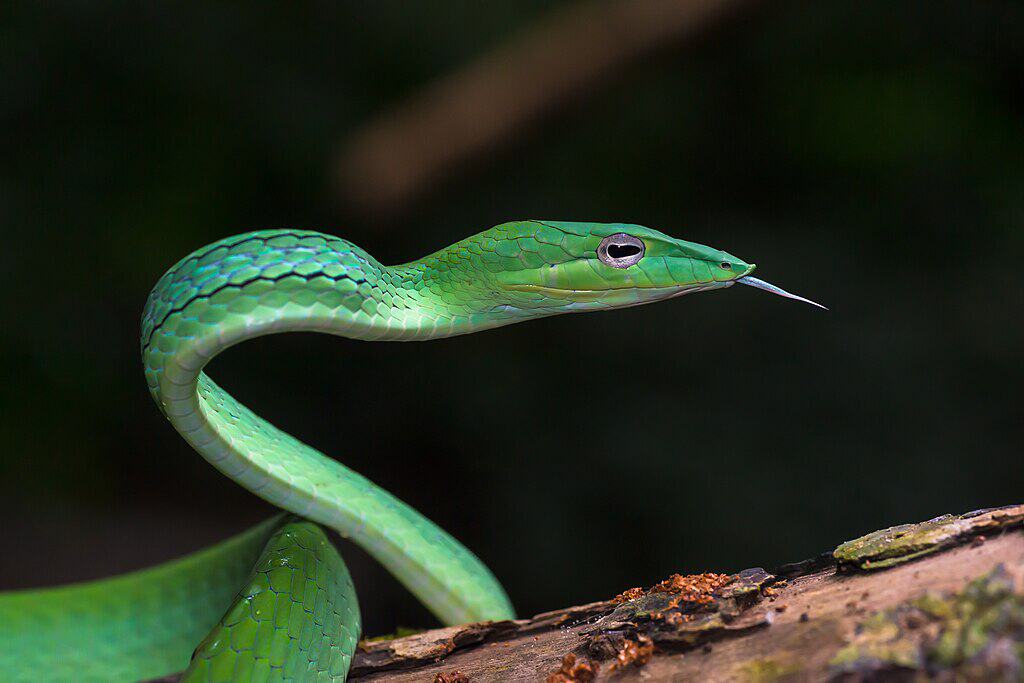
The Vine Snake is a slender, whip-like reptile native to Central and South America, typically measuring between 4-6 feet in length but with a body diameter often less than a pencil. While longer than some entries on this list, its extremely thin build qualifies it as a tiny reptile by mass. These arboreal hunters possess a mild venom that, while rarely life-threatening to humans, can cause significant local pain and swelling. What makes them remarkable is their specialized anatomy—they have disproportionately large eyes with horizontal pupils and a pointed snout that enhances their camouflage among vegetation. The vine snake’s hunting strategy involves remaining perfectly still until prey ventures close, then striking with lightning speed. Their lime green coloration makes them nearly invisible among the foliage of their rainforest habitat. When threatened, they open their mouth wide to reveal a startlingly black interior—a defensive display meant to deter predators. Though not as lethal as other entries on this list, their perfect camouflage and arboreal lifestyle mean encounters often happen at face level, making eye injuries from their strikes particularly concerning.
Desert Massasauga Rattlesnake (Sistrurus catenatus edwardsii)
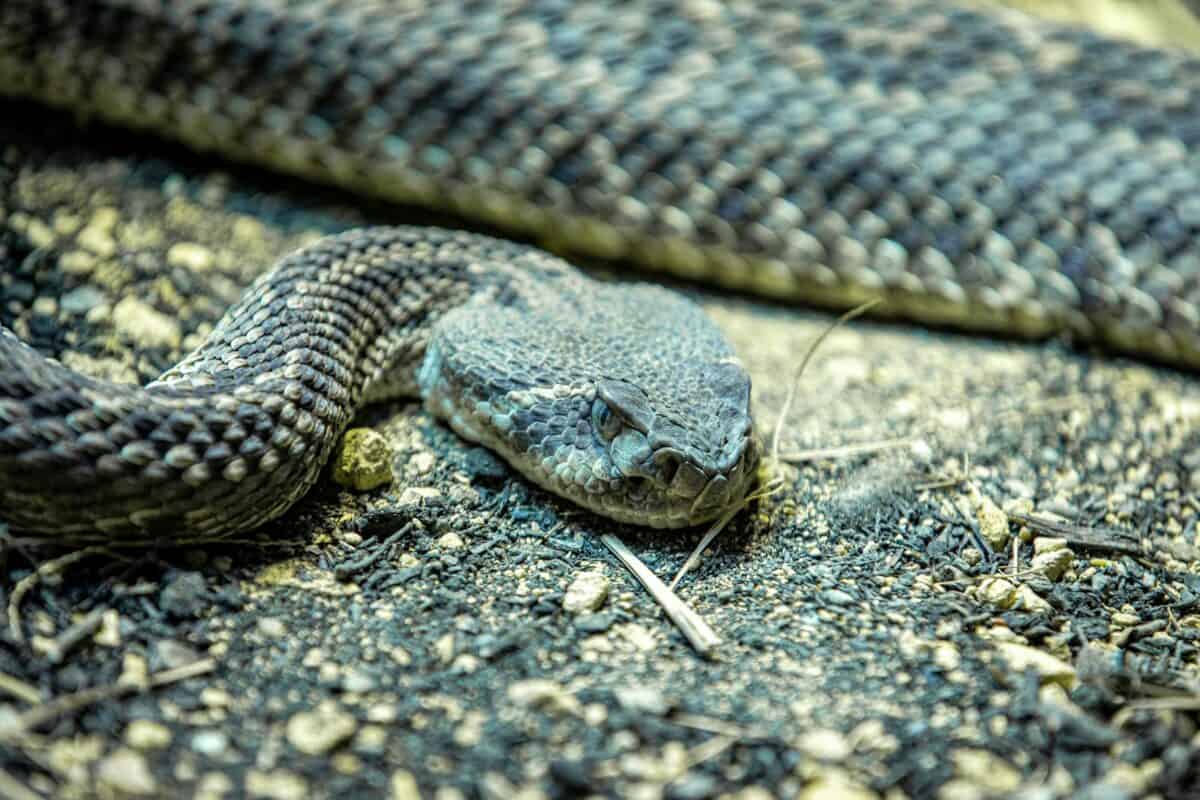
The Desert Massasauga is one of North America’s smallest rattlesnakes, rarely exceeding 24 inches in length. This diminutive pit viper inhabits arid grasslands and desert scrub areas across the southwestern United States and northern Mexico. Despite its small size, it delivers a potent hemotoxic venom that can cause serious tissue damage, internal bleeding, and in rare cases, death if left untreated. What makes the Desert Massasauga particularly dangerous is its tendency to freeze rather than flee when encountered, making it easy to step on accidentally. Additionally, its rattle is much quieter than those of larger rattlesnake species, sometimes barely audible, providing less warning to approaching humans. The snake’s cryptic coloration—featuring gray or tan blotches on a lighter background—provides excellent camouflage against the sandy soils and sparse vegetation of its habitat. Massasaugas are particularly active at dawn and dusk when temperatures are moderate, which unfortunately coincides with peak human hiking activity in desert environments.
Rough-Scaled Bush Viper (Atheris hispida)

The Rough-Scaled Bush Viper is a strikingly beautiful yet deadly small snake native to the forests of Central Africa. Rarely exceeding 18-24 inches in length, this arboreal viper is characterized by its keeled, bristle-like scales that give it a unique, almost dragon-like appearance. These scales can be raised when the snake feels threatened, making it appear larger and more intimidating. Despite its small size, the Bush Viper possesses a highly potent hemotoxic venom that can cause severe bleeding, tissue damage, and potentially death. What makes this tiny reptile particularly dangerous is its perfect camouflage among the mossy branches of its rainforest habitat, combined with its habit of perching at heights where humans might inadvertently place their hands while climbing or hiking. The species comes in various stunning color morphs, including green, yellow, and red, adding to its appeal among reptile enthusiasts. Unfortunately, this has led to collection for the illegal pet trade, despite the fact that there’s currently no antivenom specifically designed for Bush Viper bites, making any envenomation especially dangerous.
Eastern Brown Snake (Pseudonaja textiles)
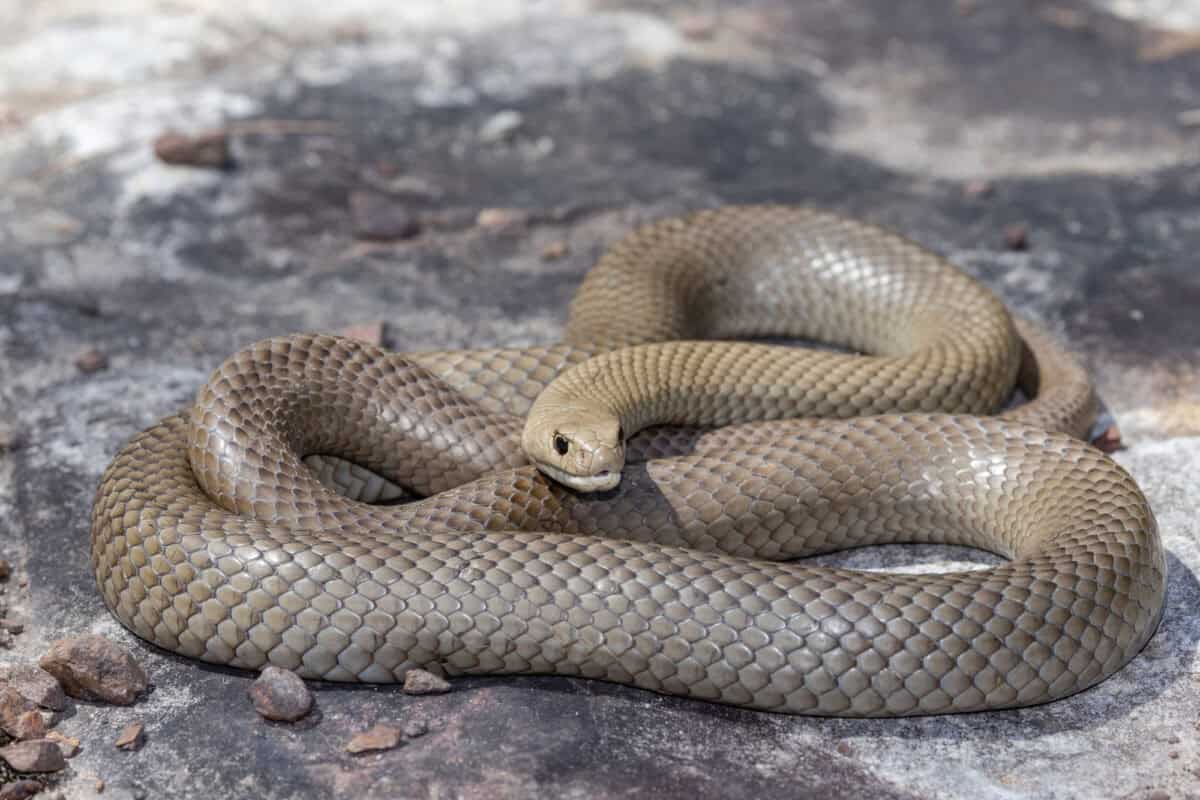
The Eastern Brown Snake may be small by dangerous snake standards—typically 4-6 feet in length with a slender build—but it ranks as the second most venomous land snake in the world. Native to eastern and central Australia and Papua New Guinea, this unassuming reptile is responsible for more snakebite deaths in Australia than any other species. What makes the Eastern Brown particularly dangerous is its combination of highly potent venom, aggressive defense when threatened, incredible speed (they can move at 12 mph over short distances), and their comfort living in populated areas. Their venom contains powerful neurotoxins and coagulants that can cause paralysis, uncontrollable bleeding, and death within hours if untreated. Adding to their danger is their inconspicuous coloration—varying shades of brown that blend perfectly with Australian bush environments—and their habit of freezing when first detected, then making sudden, lightning-fast movements when they feel threatened. Unlike some venomous snakes that deliver “dry bites” without venom, Eastern Browns inject venom in approximately 90% of their bites, making every encounter potentially life-threatening.
The Deadly Truth About Tiny Reptiles

The reptiles highlighted in this article demonstrate that dangerous capabilities often come in small packages in the natural world. These tiny yet powerful creatures have evolved sophisticated venom delivery systems and defensive strategies that can pose serious—and sometimes fatal—threats to humans who encounter them. Despite their dangerous potential, it’s important to remember that most of these reptiles use their venomous capabilities primarily for hunting prey or self-defense, not for attacking humans. Most reptile-related injuries occur when these animals are threatened, cornered, or accidentally disturbed. Understanding and respecting these small but mighty reptiles is crucial for both human safety and conservation efforts, as many of these species face population declines due to habitat loss and persecution. The next time you’re in an area known to harbor small venomous reptiles, remember that maintaining a respectful distance and being aware of your surroundings is the best approach to coexisting safely with these fascinating, if dangerous, members of our global ecosystem.
- 14 Dog Breeds That Love to Cuddle - August 9, 2025
- 11 Signs Your Horse Might Be Bored - August 9, 2025
- Jurassic World Dominion Dinosaurs - August 9, 2025

